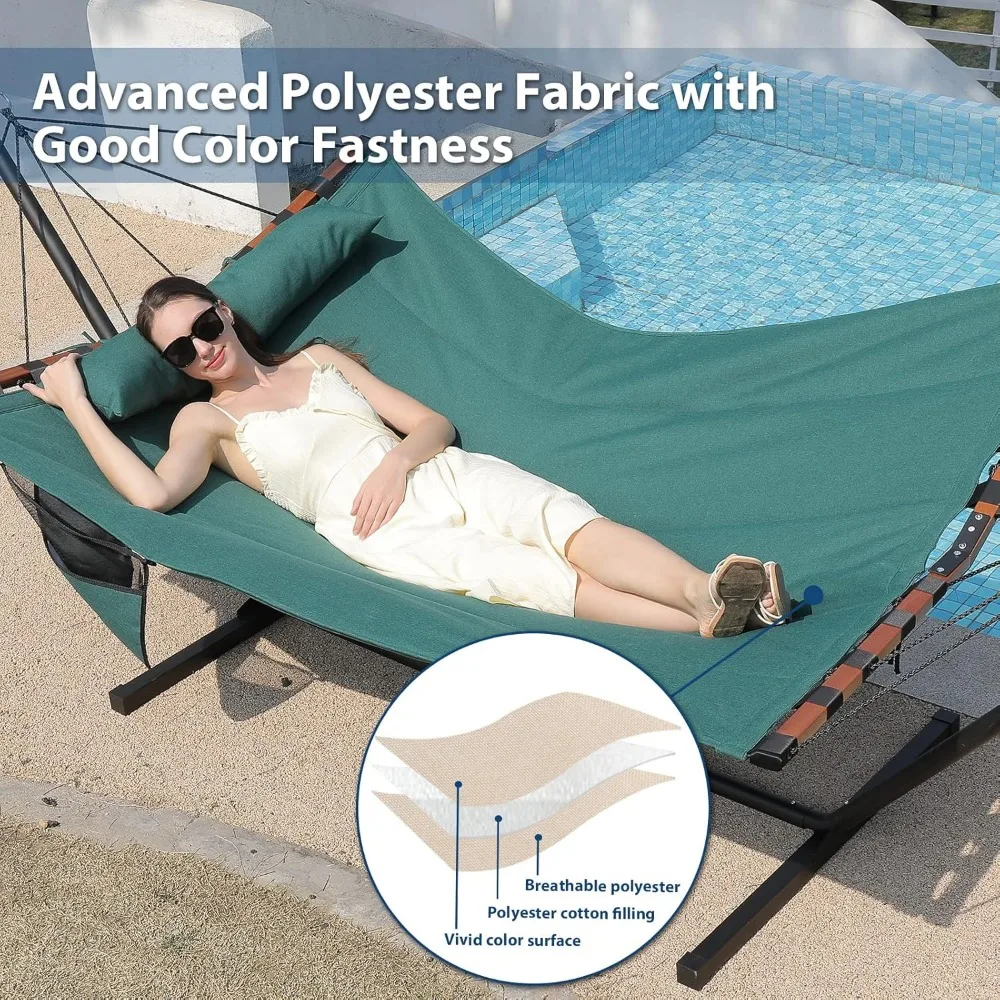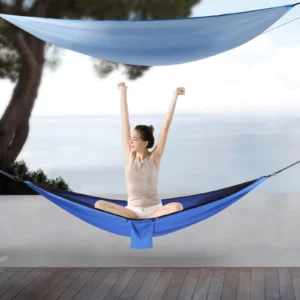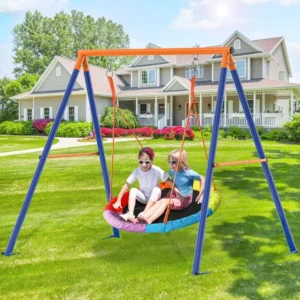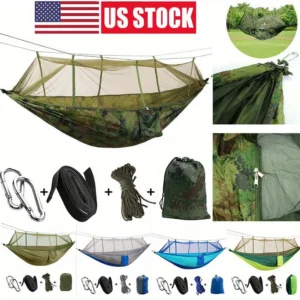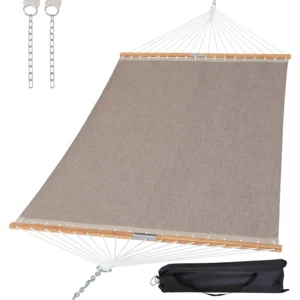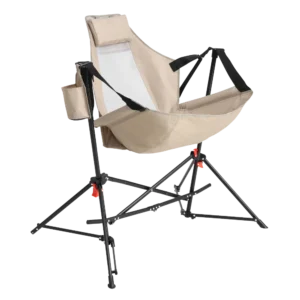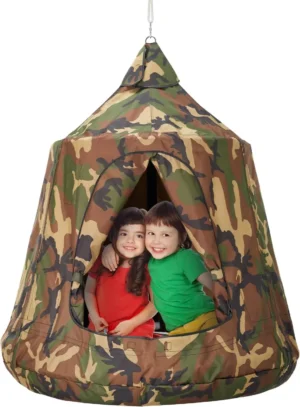Introduction
There’s something magical about swaying gently in a hammock while enjoying the great outdoors. Whether you’re deep in the backcountry or relaxing in your backyard, the right hammock can transform your outdoor experience into something truly special. But not all hammocks are created equal – especially when it comes to material.
For outdoor enthusiasts who value mobility and comfort, the material of your hammock can make or break your experience. It affects everything from how much weight you carry on the trail to how comfortable you feel when lounging. The difference between a hammock weighing 10 oz (283 g) versus 2 lbs (907 g) might seem small until you’re miles into a hike.
In this guide, we’ll explore the key materials used in lightweight outdoor hammocks, examining their strengths and weaknesses across essential criteria like weight, strength, comfort, and weather resistance. Understanding different indoor and outdoor hammock placement options will provide valuable context as we dive into the material considerations that make the perfect lightweight hammock.
Understanding Your Hammocking Needs Before Choosing Materials
Before exploring specific materials, it’s important to consider how you plan to use your hammock. Different activities and environments call for different material properties.
- Ultralight Backpacking: If you’re counting every ounce and need maximum packability, your material needs will prioritize minimal weight and small packed size.
- Weekend Camping: Regular campers need a balance of durability and weight, as their hammock will see consistent use but isn’t carried daily.
- Casual Outdoor Use: For primarily backyard or park use, comfort and durability might outweigh strict weight considerations.
- Environmental Factors: Will you use your hammock in humid rainforests, dry deserts, or variable mountain conditions?
The importance of matching your hammock material to your environment cannot be overstated. For example, frequent backpackers traversing varied terrain will have different needs than weekend warriors or those using their hammock primarily in established indoor-outdoor hammock locations.
Defining Your Priorities: The Material Selection Framework
To help identify the best material for your needs, consider rating the following factors in order of importance:
- Weight & Packability: How important is minimizing weight in your pack?
- Durability & Strength: Will your hammock face rough conditions or frequent use?
- Comfort Factors: How important are texture, breathability, and the right amount of stretch?
- Weather Resistance: Will you encounter rain, UV exposure, or humidity regularly?
- Budget Constraints: Premium materials often come with premium prices.
For example, a hammock that packs down to the size of a softball will serve different needs than one that offers superior resistance to environmental factors. Understanding whether you can leave your hammock outside in various weather conditions depends largely on material choice.
Ripstop Nylon: The Lightweight Champion
When it comes to lightweight outdoor hammocks, ripstop nylon reigns supreme for good reason. This remarkable material gets its name from its distinctive reinforcement technique – small, strong threads interwoven in a grid pattern throughout the fabric that prevent tears from spreading.
Ripstop nylon offers an exceptional strength-to-weight ratio, making it the go-to choice for performance-focused hammocks. A typical 40D ripstop nylon hammock weighs only about 14 oz (397 g), yet can safely support well over 300 pounds.
Key advantages of ripstop nylon include:
- Incredible lightweight properties
- Outstanding tensile strength
- Good packability (compresses very small)
- Quick-drying capability
- Soft hand feel against skin
The primary drawbacks include:
- Less UV resistant than some alternatives
- Can absorb water in heavy rain
- More stretch than polyester (which can be good or bad depending on preference)
Modern ultralight camping hammock sets almost exclusively use ripstop nylon due to these advantages, with various denier ratings depending on the intended use case.
Understanding Nylon Denier Ratings for Hammocks
Denier (D) refers to the thickness of the individual threads used to weave the fabric. Lower denier numbers indicate lighter, thinner fabric, while higher numbers mean stronger, heavier material.
| Denier Rating | Typical Weight | Durability | Best Use |
|---|---|---|---|
| 10-20D | Ultra-lightweight | Low-moderate | Minimalist backpacking |
| 30-40D | Lightweight | Moderate | General backpacking, weekend trips |
| 70D+ | Standard weight | High | Frequent use, durability-focused |
The denier choice represents a direct trade-off between weight and durability. While a 20D hammock might weigh just 7-9 oz (198-255 g), it requires more careful handling than a 70D version weighing 16-20 oz (453-567 g). The latter will better withstand rough treatment and frequent use but adds weight to your pack.
Polyester: The Durable Alternative
While ripstop nylon dominates the ultralight category, polyester offers compelling advantages that make it worth serious consideration for many hammock enthusiasts.
Polyester’s standout characteristics include:
- Superior UV resistance (maintains strength longer in sunny conditions)
- Minimal stretch when wet (maintains tension better)
- Excellent water resistance and quick-drying properties
- Greater abrasion resistance in many cases
- Better long-term durability in outdoor conditions
The primary downsides compared to nylon include:
- Typically heavier for the same strength rating
- Generally less soft against skin
- Often slightly bulkier when packed
- Usually costs more for comparable performance
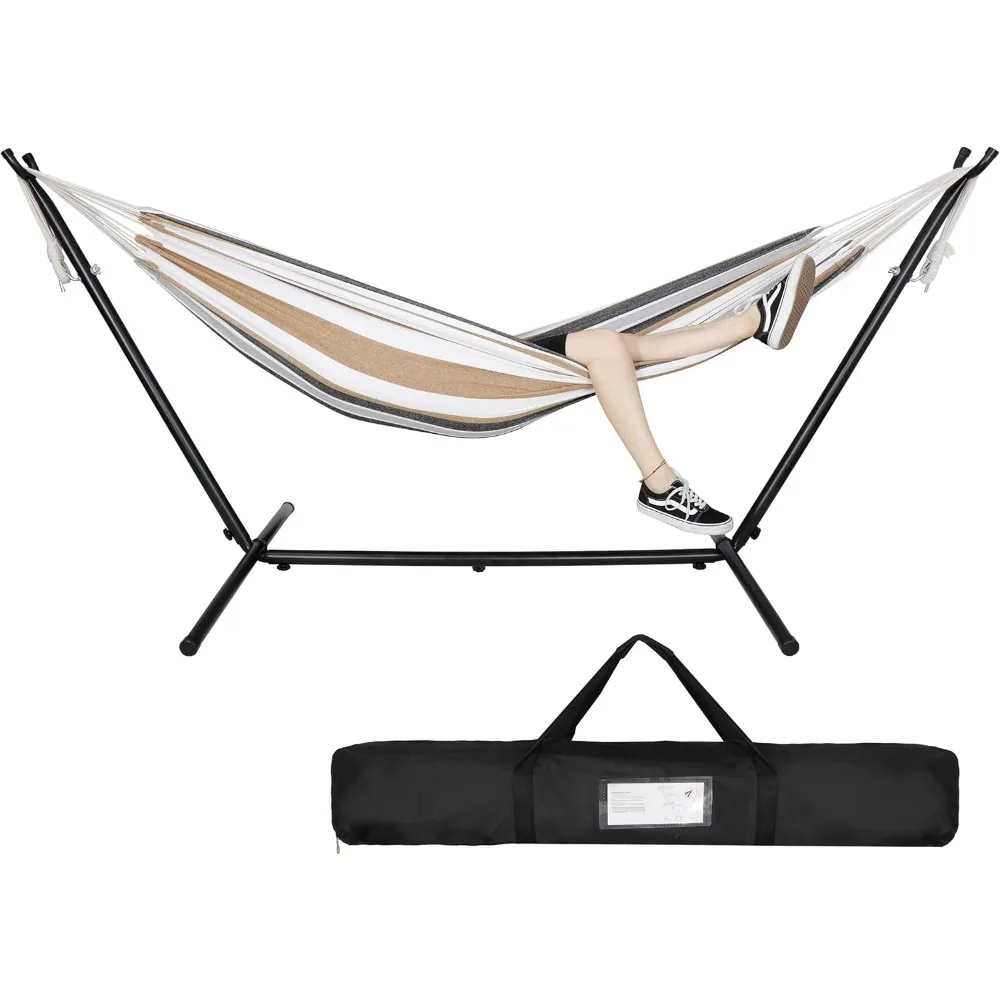
Understanding waterproof materials for hammock protection becomes crucial when comparing polyester to alternatives, as its natural water-shedding abilities make it less dependent on additional treatments.
Polyester Performance in Challenging Environments
Polyester truly shines in demanding environmental conditions that would degrade other materials:
Humid Conditions: Unlike nylon, polyester absorbs very little moisture (typically less than 0.4% of its weight vs. 4% for nylon), maintaining its strength and preventing the saggy feeling that wet nylon develops.
Intense Sun Exposure: Polyester retains approximately 80-85% of its strength after extended UV exposure, while nylon might maintain only 50-60% under identical conditions.
Mildew and Mold Resistance: The synthetic nature of polyester makes it naturally resistant to organic growth, a significant advantage in damp environments.
Saltwater Exposure: Polyester handles salt exposure better than nylon, making it preferable for coastal camping.
Many lightweight hammock sets use polyester when designed for versatility across various environments rather than absolute minimum weight.
Specialized Lightweight Fabrics: Beyond the Basics
Beyond standard nylon and polyester, several specialized fabrics push the boundaries of hammock performance:
HyperD is a proprietary nylon fabric featuring diamond ripstop technology that offers exceptional strength at lower weights. Its unique weave creates a soft, silky feel that many users find more comfortable against skin than traditional ripstop.
Monolite combines the lightweight properties of nylon with enhanced weather resistance. Its specialized weave creates a naturally water-resistant surface without heavy coatings or treatments.
Hexon fabrics use a honeycomb ripstop pattern that distributes force more efficiently across the material, allowing for thinner fabric to achieve comparable strength ratings.
These specialized materials typically come with a 15-30% price premium over standard fabrics but offer performance advantages for specific uses. Many cottage manufacturers in the hammock industry use these premium materials exclusively.
Material Comparison: Ripstop Nylon vs. Polyester for Lightweight Hammocks
| Feature | Ripstop Nylon | Polyester |
|---|---|---|
| Weight | Lighter (advantage: nylon) | Slightly heavier |
| Strength when dry | Excellent | Very good |
| Strength when wet | Decreases by ~15-20% | Maintains ~95% of dry strength |
| UV Resistance | Moderate | Excellent |
| Water absorption | Absorbs 4-5% of weight | Absorbs <0.5% of weight |
| Drying time | Good | Excellent (30-40% faster) |
| Feel against skin | Softer, silkier | Slightly coarser |
| Packed size | Very compact | Compact |
| Stretch | More stretch (5-15%) | Minimal stretch (1-3%) |
| Typical lifespan | 3-5 years of regular use | 5-7 years of regular use |
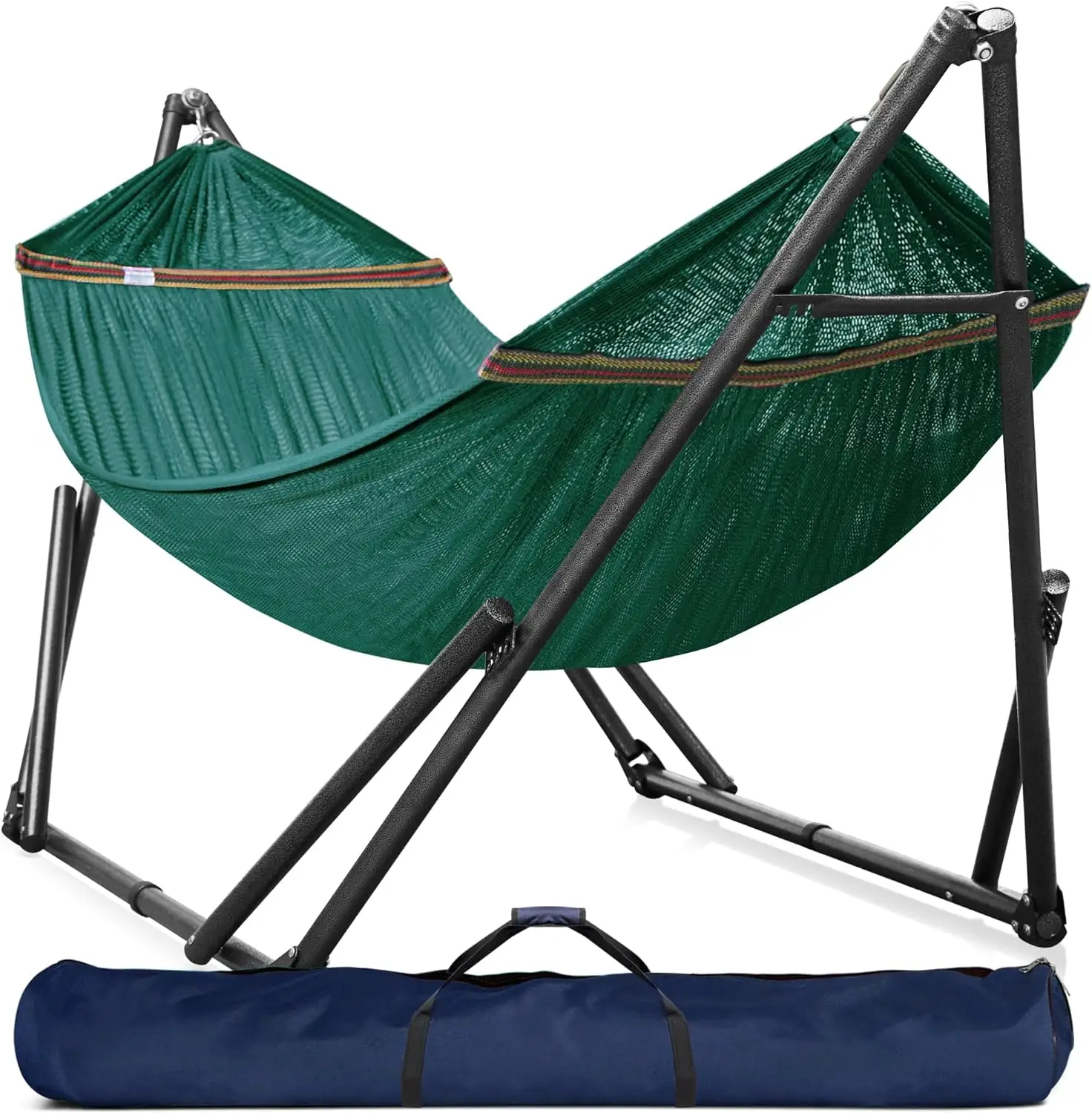
When seeking to elevate sleep through lightweight hammock camping, this comparison becomes crucial for selecting the material that will provide the best overall experience.
Key Trade-offs to Consider When Selecting Materials
When choosing your hammock material, these trade-offs require careful consideration:
Weight vs. Durability: The lightest options (10-20D nylon) sacrifice longevity. Is saving 4-6 ounces worth potentially replacing your hammock sooner?
Comfort vs. Stability: Nylon’s natural stretch creates a more enveloping feel but may require adjustment during long sits. Polyester maintains its shape better but feels less adaptive to body contours.
Weather Resistance vs. Breathability: Tightly woven water-resistant fabrics tend to trap more heat. In hot climates, a more breathable fabric may be worth the occasional quick-drying after light rain.
Cost vs. Performance: Premium materials can add $20-50 to the price of a hammock. For occasional users, standard materials often provide perfectly acceptable performance at lower cost.
Many portable hammocks with stands must balance these trade-offs to create systems that are both lightweight and durable.
Decoding Technical Fabric Specifications
Understanding the technical terms used to describe hammock fabrics empowers you to make informed decisions:
Denier (D): A measurement of thread thickness. Lower numbers mean thinner threads and lighter fabric, but usually less durability.
Thread Count: The number of threads per inch in both directions of the weave. Higher thread counts often indicate smoother, stronger fabrics at a given weight.
Ripstop Pattern: The visible grid of reinforcement threads. Different patterns (square, diamond, hexagonal) distribute forces differently across the fabric.
GSM (Grams per Square Meter): A direct measure of fabric weight. Lightweight hammock fabrics typically range from 30-70 GSM.
DWR (Durable Water Repellent): A treatment applied to fabrics that causes water to bead and roll off rather than soak through. This is not the same as being waterproof.
Single vs. Double Layer: Some hammocks use two layers of fabric for added strength, creating a sleeve that can hold a sleeping pad.
Materials to Avoid for Lightweight Outdoor Hammocking
While some materials make excellent hammocks for indoor or casual use, they should be avoided for serious outdoor adventures:
Cotton: Despite its comfort, cotton absorbs up to 27 times its weight in water, stays wet for hours, and becomes extremely heavy when damp. It’s also susceptible to mold and mildew.
Canvas: Though durable, canvas hammocks typically weigh 4-7 pounds (1.8-3.2 kg) – far too heavy for portable use. They also share cotton’s moisture problems.
Non-ripstop Fabrics: Regular woven nylon or polyester without ripstop reinforcement can develop catastrophic tears from small punctures, a serious safety concern when suspended above the ground.
Blended Fabrics: Materials mixing natural and synthetic fibers often inherit the weaknesses of both rather than the strengths.
Best Material Choices Based on Your Hammocking Style
Based on your intended use, here are the optimal material choices:
For Ultralight Backpacking:
* Primary recommendation: 20D-30D ripstop nylon
* Weight priority: Approximately 7-10 oz (198-283 g) total hammock weight
* Key benefit: Minimizes pack weight and volume
For General Camping:
* Primary recommendation: 40D-70D ripstop nylon or 40D+ polyester
* Weight range: 12-16 oz (340-453 g)
* Key benefit: Balances weight concerns with sufficient durability
For Frequent Outdoor Use:
* Primary recommendation: 70D+ polyester with ripstop
* Weight range: 16-20 oz (453-567 g)
* Key benefit: Maximizes longevity and resistance to elements
For Wet Climates:
* Primary recommendation: Polyester with DWR treatment
* Key benefit: Maintains tension when damp, dries quickly
For those concerned about insects while hammocking, camping hammock sets with bug nets are available in various material options tailored to different environments.
Maximizing Lifespan: Proper Care for Your Lightweight Hammock Materials
Proper maintenance significantly extends the life of lightweight hammock materials:
Cleaning Best Practices:
* Hand wash with mild soap (never bleach)
* Avoid machine washing ultralight fabrics
* Rinse thoroughly to remove all soap residue
Drying and Storage:
* Always store completely dry to prevent mildew
* Keep away from direct sunlight when not in use
* Store loosely packed rather than compressed
UV Protection:
* Limit unnecessary sun exposure
* Consider protective sprays for nylon hammocks
* Retreat DWR coatings annually for best performance
Remembering these simple care techniques can extend your hammock’s life by years rather than seasons.

Understanding the proper care for materials also applies to two-person hammock fabrics, where additional weight and stress make maintenance even more important.
How Will Your Hammock Material Feel Against Your Skin?
The sensory experience of different hammock materials varies significantly:
Ripstop Nylon: Creates a silky, smooth surface that feels cool initially and adapts quickly to body temperature. The fine grid pattern is barely perceptible to touch.
Polyester: Provides a slightly more textured feel that some find less comfortable for bare skin. However, its consistent tension creates a more stable laying surface.
Specialized Fabrics: Premium options like HyperD offer the softest feel against skin while maintaining performance characteristics.
In hot weather, the breathability differences become more noticeable, with looser weaves allowing better airflow but potentially less stability.
Camping Hammock Sets with Bug Net, Ultralight Camping Hammock Sets
$139.72 Select options This product has multiple variants. The options may be chosen on the product pageFolding Hammock Sets, Quick Setup Hammock Sets
Price range: $305.52 through $583.27 Select options This product has multiple variants. The options may be chosen on the product pageCamping Hammock Sets with Bug Net, Complete Camping Hammock Systems
Price range: $82.73 through $97.96 Select options This product has multiple variants. The options may be chosen on the product pageFolding Hammock Sets, Lightweight Hammock Sets
$295.80 Select options This product has multiple variants. The options may be chosen on the product pageComplete Camping Hammock Systems, Hanging Egg Chair Sets
$266.73 Select options This product has multiple variants. The options may be chosen on the product page
Is a Lightweight Hammock Right for You? Weight vs. Durability Considerations
Before committing to ultralight materials, consider these practical questions:
How frequently will you use your hammock? Daily or weekly use calls for more durable materials than occasional adventures.
What’s your typical hammocking environment? Rough terrain with exposed branches and rocks demands tougher fabrics.
Are you willing to be careful with your gear? Ultralight materials require more mindful handling and setup.
What’s your body weight? Heavier individuals should choose stronger materials regardless of weight considerations.
Remember that the lightest options (10-20D) might save 5-7 oz (142-198 g) compared to more durable choices (70D), but may last only half as long under similar use. For many outdoor enthusiasts, the sweet spot lies in the 40D range, balancing reasonable weight with good durability.
For versatile options that don’t sacrifice too much in either direction, quick-setup hammock sets often use balanced materials that offer good all-around performance.
FAQs About Lightweight Hammock Materials
Q: Will lightweight hammock materials support my weight safely?
A: Quality lightweight materials from reputable manufacturers are designed with appropriate safety margins. A properly rated hammock will support its stated weight limit with a significant safety factor.
Q: How long will a lightweight hammock last with regular use?
A: With proper care, lightweight hammocks typically last 2-5 years with regular weekend use. Ultralight options (10-20D) tend toward the shorter end of this range, while 40-70D options can exceed it.
Q: Can I leave my lightweight hammock set up for extended periods?
A: This is not recommended. UV exposure is the primary enemy of synthetic fabrics. Even UV-resistant polyester will degrade if left exposed for weeks or months.
Q: Are lightweight hammocks waterproof?
A: Most are water-resistant rather than waterproof. Polyester naturally repels water better than nylon. DWR treatments improve water resistance but require regular renewal.
Q: How much weight difference is there really between materials?
A: The difference between an ultralight 20D nylon hammock and a durable 70D polyester version is typically 6-9 oz (170-255 g) – roughly equivalent to a small water bottle.
For a complete outdoor sleeping solution using appropriate materials, consider complete camping hammock systems that include carefully matched components.
Conclusion
The perfect lightweight hammock material aligns with your personal priorities – whether that’s achieving the absolute minimum weight, maximizing durability, or finding the optimal balance between the two. Ripstop nylon excels for weight-conscious users, while polyester offers advantages in durability and weather resistance.
By understanding the properties of each material and honestly assessing your needs, you can select a hammock that will provide years of comfortable outdoor relaxation. Remember that the best material is ultimately the one that supports your unique outdoor lifestyle.

